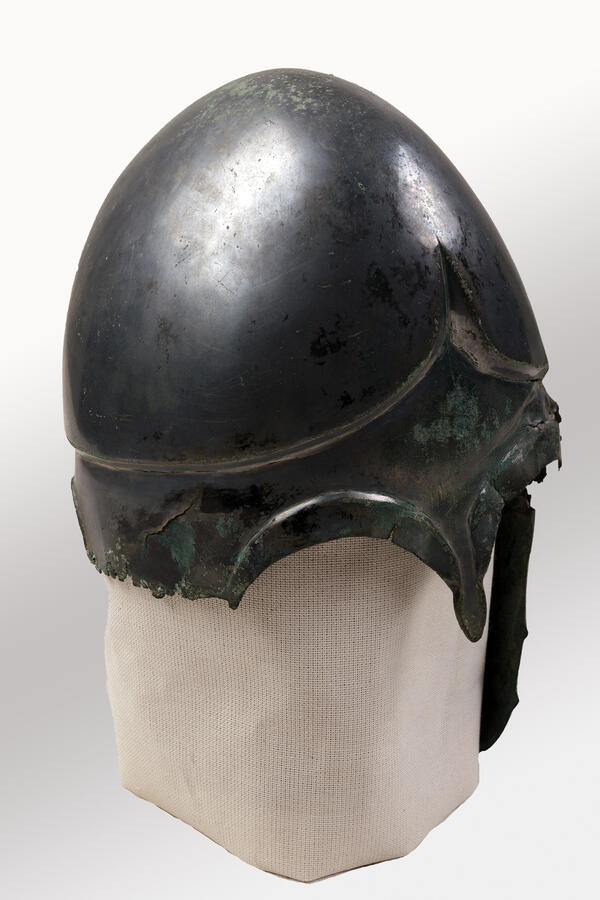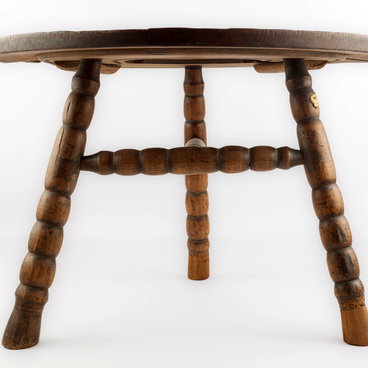Weapons exist as long as the human world, and they are constantly being improved. The methods of protection against weapons are also being improved. A helmet is a means of individual protection of a person’s head from injuries and wounds.
On the Black Sea coast of the Northwest Caucasus, in ancient times, local tribes fought with each other, seeking to expand their lands and assert their power. The Greeks who moved to these territories during the Greek colonization often found themselves in a hostile environment and were forced to be on the alert. Greek weapons and protective equipment were of higher quality, so the local nobility sought to buy the works of Greek gunsmiths. This purchase was not only a necessity, but also demonstrated the status and wealth of the owner.
The helmet kept in the collection of the Gelendzhik Museum belongs to the Attic type. However, most likely, it was made by the artisans of the Bosporan kingdom and was used by the local tribal nobility. This theory is supported by the more sloping shape of the back of the helmet and the absence of a crest. This is a simplified version of the classic Attic helmet.
The classic Attic helmet was made mainly in Greece. As a rule, it had a small nose guard, which could be absent altogether. The cheek pads were narrow, moon-shaped, attached to the helmet with loops, but they seldom used in combat. This is evidenced by the images of Greek warriors with their cheek pads thrown back in battle.
Attica is a region situated in the southeastern part of the Central Greece. Attic helmets are a variety of Chalcidian helmets, which often lacked a nose guard. Experts believe, that the absence of a nose guard increased the viewing angle. Thanks to the figured cutout, the cheek pads were better protection of the warrior’s face, and not just a continuation of the helmet. A little later, to increase their strength, they also began to be hinged.
This helmet was found on January 2, 1984 by local residents N. Kozleneev and A. Burenko near the village of Pshada, Krasnodar Territory, on the territory of a destroyed ancient burial ground.
On the Black Sea coast of the Northwest Caucasus, in ancient times, local tribes fought with each other, seeking to expand their lands and assert their power. The Greeks who moved to these territories during the Greek colonization often found themselves in a hostile environment and were forced to be on the alert. Greek weapons and protective equipment were of higher quality, so the local nobility sought to buy the works of Greek gunsmiths. This purchase was not only a necessity, but also demonstrated the status and wealth of the owner.
The helmet kept in the collection of the Gelendzhik Museum belongs to the Attic type. However, most likely, it was made by the artisans of the Bosporan kingdom and was used by the local tribal nobility. This theory is supported by the more sloping shape of the back of the helmet and the absence of a crest. This is a simplified version of the classic Attic helmet.
The classic Attic helmet was made mainly in Greece. As a rule, it had a small nose guard, which could be absent altogether. The cheek pads were narrow, moon-shaped, attached to the helmet with loops, but they seldom used in combat. This is evidenced by the images of Greek warriors with their cheek pads thrown back in battle.
Attica is a region situated in the southeastern part of the Central Greece. Attic helmets are a variety of Chalcidian helmets, which often lacked a nose guard. Experts believe, that the absence of a nose guard increased the viewing angle. Thanks to the figured cutout, the cheek pads were better protection of the warrior’s face, and not just a continuation of the helmet. A little later, to increase their strength, they also began to be hinged.
This helmet was found on January 2, 1984 by local residents N. Kozleneev and A. Burenko near the village of Pshada, Krasnodar Territory, on the territory of a destroyed ancient burial ground.




